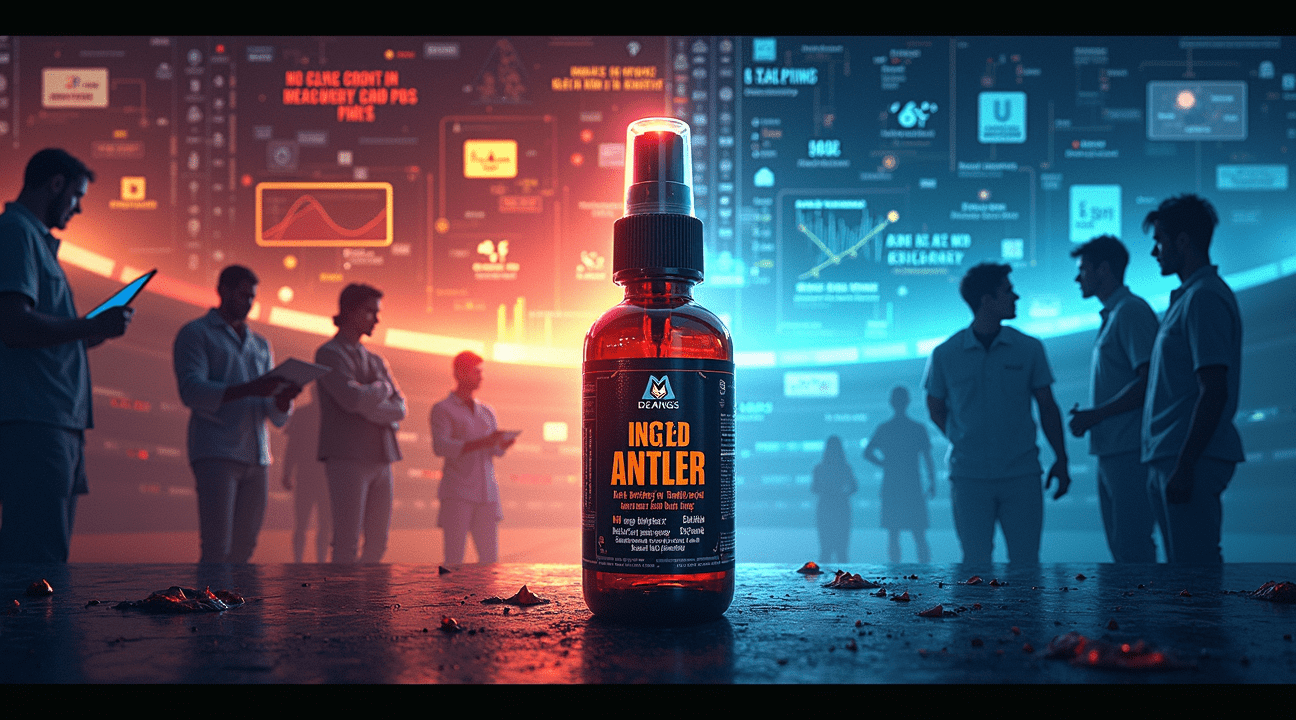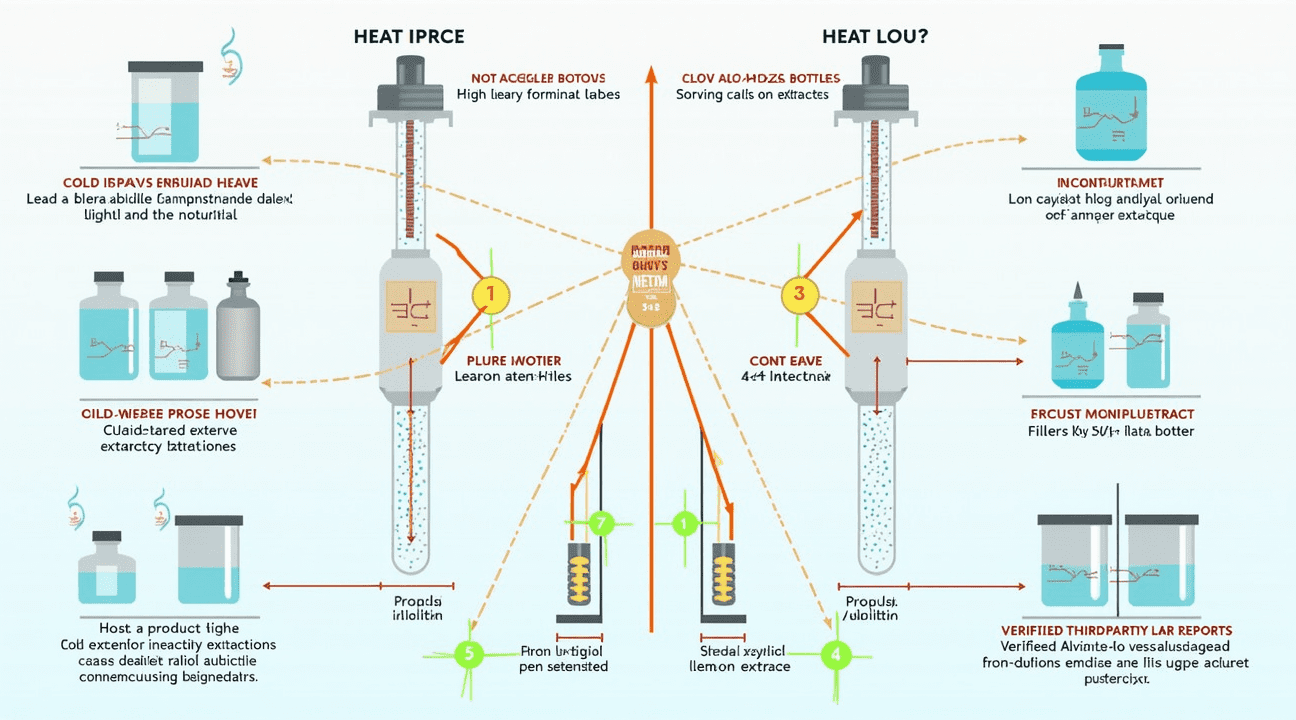Deer antler spray is often promoted as a powerful natural supplement for muscle growth and enhanced athletic performance, yet scientific evidence strongly challenges these claims.
Overview of Deer Antler Spray
Deer antler spray contains several bioactive compounds, including insulin-like growth factor-1 (IGF-1), proteins, minerals, and amino acids. Despite its nutritional composition, large-scale, controlled studies reveal no significant benefit over placebos in terms of muscle size, strength, or recovery outcomes.
Key Takeaways
- Biological Composition: Deer antler spray is composed of approximately 53% proteins, 34% minerals, 13 growth factors such as IGF-1, and 21 amino acids. However, no measurable performance advantage has been proven in placebo-controlled trials.
- Scientific Evidence: A 10-week double-blind study showed no significant improvements in muscle mass, strength, athletic ability, or post-workout recovery in individuals who used the supplement.
- Regulatory Risks: IGF-1 is listed as a banned substance by the World Anti-Doping Agency (WADA), the NCAA, and many professional sports organizations, making the use of deer antler spray a high-risk choice for athletes.
- Product Quality Concerns: Due to varying extraction processes and a lack of FDA regulation, the potency and purity of products differ greatly; many contain negligible amounts of the ingredients listed on the label.
- Health and Safety: There is limited data on the long-term safety of deer antler spray. The absence of standardized dosing increases potential health hazards for regular users.
Conclusion
While deer antler spray is marketed extensively for its supposed benefits in sports and bodybuilding communities, peer-reviewed studies do not support these claims. Furthermore, the use of IGF-1-containing substances can lead to disqualifications or sanctions in competitive sports. Consumers are urged to consider the risks, regulatory implications, and lack of proven efficacy before using such products.
The Controversial Athletic Performance Supplement That Lacks Scientific Backing
I’ve examined countless athletic supplements throughout my career, and deer antler spray stands out as one of the most controversial products in sports nutrition. Companies aggressively market this supplement with bold claims about muscle growth, enhanced athletic performance, anti-aging benefits, and accelerated recovery after intense training sessions.
The reality tells a different story. Research consistently fails to support these ambitious marketing claims. A comprehensive 10-week double-blind study followed resistance-trained men who used deer antler spray regularly during their training cycles. Scientists measured muscle size increases, strength gains, overall performance improvements, and post-exercise muscle soreness levels throughout the study period.
Research Reveals No Performance Benefits
The results were striking in their lack of positive findings. Participants who used deer antler spray showed no significant increases in muscle size compared to those taking a placebo. Strength measurements remained virtually identical between groups, and athletic performance markers showed no meaningful improvements. Perhaps most disappointing for athletes seeking recovery benefits, the supplement failed to reduce post-exercise muscle soreness in any measurable way.
This single study isn’t an outlier. Human studies examining deer antler spray consistently provide limited and inconsistent support for the benefits manufacturers promote. While some preliminary research shows promise in laboratory settings, these findings rarely translate to real-world athletic performance improvements when tested in controlled human trials.
The supplement industry continues marketing deer antler spray despite this lack of scientific validation. Athletes often gravitate toward products promising quick results, especially when facing competitive pressures. However, scientists think the placebo effect might explain some reported benefits users experience.
Beyond efficacy concerns, athletes face serious regulatory risks when using deer antler spray. The supplement contains IGF-1 (insulin-like growth factor-1) as one of its primary active ingredients. Major sports organizations including the World Anti-Doping Agency, NCAA, and professional leagues have banned IGF-1 due to its potential performance-enhancing properties.
Athletes who test positive for IGF-1 face suspensions, stripped titles, and damaged reputations. The irony is particularly harsh — athletes risk career-ending penalties for a supplement that research shows provides no actual performance benefits. Drug testing technology has advanced significantly, making detection more likely than ever before.
I recommend athletes focus their energy and resources on proven strategies instead. Proper nutrition, adequate sleep, progressive training programs, and established recovery methods deliver the results deer antler spray promises but fails to provide. These evidence-based approaches carry no regulatory risks while offering genuine performance improvements backed by decades of scientific research.

What’s Actually Inside This Velvet Antler Extract
Deer antler spray contains a complex mixture of bioactive compounds harvested from the velvet covering of growing deer antlers. This soft, blood-rich tissue that covers developing antlers provides the raw material for what manufacturers claim is a powerful supplement packed with growth-promoting substances.
The composition of deer antler velvet reveals an impressive nutritional profile. According to research analysis, the extract consists of approximately 53% proteins, 34% minerals, 3% lipids, and 10% water. This breakdown shows that proteins and minerals dominate the supplement’s makeup, providing the foundation for many of its purported benefits.
The Growth Factor Portfolio
Scientists have identified roughly 13 different growth factors within deer antler velvet, with IGF-1 (Insulin-like Growth Factor 1) receiving the most attention from researchers and marketers alike. Some manufacturers are quite specific about their IGF-1 content, with certain products advertising “25,000 ng of IGF-1 per bottle.” This growth factor naturally occurs in the human body and plays a crucial role in muscle development and tissue repair.
Beyond IGF-1, the supplement contains approximately 21 amino acids that serve as building blocks for protein synthesis. These amino acids support various bodily functions, from muscle recovery to immune system maintenance. The presence of 20 different glycosaminoglycans adds another layer of complexity to the formula. These compounds are essential components of cartilage and joint tissue, which explains why some users turn to deer antler spray for joint support.
The mineral content proves equally impressive, featuring calcium and phosphorus as primary components along with numerous trace elements. This mineral density stems from the rapid bone formation that occurs during antler growth, as deer must develop complete antler structures within just a few months each year.
Chondroitins represent another significant component group within the extract. These naturally occurring substances support cartilage structure and may contribute to joint health maintenance. The combination of chondroitins with glycosaminoglycans creates what proponents describe as a comprehensive joint support matrix.
Manufacturers typically formulate deer antler spray for oral administration, specifically recommending sublingual application where users place drops under their tongue. This delivery method supposedly allows for rapid absorption directly into the bloodstream, bypassing the digestive system that might break down some of the bioactive compounds.
The processing methods used to create these sprays vary among manufacturers, but most involve extracting the active compounds from fresh or freeze-dried antler velvet. Some companies emphasize their extraction techniques as proprietary methods designed to preserve the integrity of growth factors and other temperature-sensitive compounds.
Quality can vary significantly between brands, as the supplement industry operates with minimal regulation compared to pharmaceuticals. Some products undergo third-party testing for purity and potency, while others rely solely on manufacturer claims. This variation means consumers often face uncertainty about the actual concentration of active ingredients in their chosen product.
The bioavailability of these compounds through oral spray administration remains a subject of debate among researchers. While sublingual delivery can enhance absorption for certain substances, the stability and effectiveness of growth factors like IGF-1 when taken orally continues to generate scientific discussion.
Storage requirements for deer antler sprays typically include refrigeration to maintain the stability of heat-sensitive compounds. Many products come with specific instructions about temperature control and shelf life to ensure users receive the maximum benefit from the bioactive ingredients.
Understanding what’s inside deer antler spray helps consumers make informed decisions about whether this supplement aligns with their health goals and expectations.
The Wide Range of Health Claims vs. Reality
Manufacturers and marketers promote deer antler spray as a comprehensive health supplement capable of delivering multiple benefits. These claimed effects span across physical performance, recovery, and overall wellness, yet the scientific evidence supporting these assertions presents a mixed picture at best.
Performance and Recovery Claims
Proponents assert that deer antler spray can significantly increase muscle strength and growth while enhancing recovery times between workouts. Athletes and fitness enthusiasts often turn to this supplement believing it will boost their training outcomes and reduce post-exercise fatigue. Some animal studies have shown promising results regarding anti-fatigue effects, with researchers observing increased endurance in mice during laboratory tests. However, these positive results don’t translate into consistent changes in fatigue-related biochemical markers, which raises questions about the practical significance of these findings.
The supplement industry also promotes deer antler spray for improved immune function, anti-inflammatory effects, anti-aging properties, and cardiovascular support. These broad health claims position the product as an all-purpose wellness solution, appealing to consumers looking for comprehensive health benefits from a single supplement.
Scientific Evidence and Research Limitations
The reality behind these impressive claims proves more complex than marketing materials suggest. Most research supporting deer antler spray’s benefits comes from animal studies or laboratory cell cultures rather than controlled human trials. While some experimental data does suggest potential bone, cartilage, and joint benefits—particularly for conditions like osteoarthritis—these effects appear linked to naturally occurring compounds like chondroitin and other glycosaminoglycans found in the velvet.
Additional laboratory research has explored anti-inflammatory, anti-cancer, and skin or hair health effects. These studies show promising results in controlled laboratory environments, but high-quality human clinical trials remain notably absent from the scientific literature. This gap between laboratory findings and real-world human applications represents a significant limitation in validating the supplement’s effectiveness.
I find it particularly important to note that the concentration and bioavailability of active compounds in commercial deer antler spray products may differ substantially from the preparations used in research studies. Manufacturing processes, storage conditions, and formulation methods can all impact the final product’s potency and effectiveness.
The lack of standardization across products presents another challenge for consumers trying to evaluate potential benefits. Unlike pharmaceutical drugs, which undergo rigorous testing and standardization, dietary supplements like deer antler spray face less stringent regulatory oversight. This means that product quality, ingredient concentrations, and purity can vary significantly between manufacturers and even between batches from the same company.
While some individuals report positive experiences with deer antler spray, these anecdotal accounts don’t constitute scientific evidence. Personal testimonials, though compelling, can be influenced by placebo effects, lifestyle changes, or other variables that coincide with supplement use. Scientific research emphasizes the importance of controlled studies to separate genuine effects from perceived benefits.
The disconnect between marketing claims and scientific validation doesn’t necessarily mean deer antler spray provides no benefits whatsoever. Rather, it highlights the need for more comprehensive human research to establish clear therapeutic effects, optimal dosing protocols, and potential safety concerns. Until such studies emerge, consumers should maintain realistic expectations about what this supplement can reasonably deliver and consider consulting healthcare professionals before incorporating it into their wellness routines.
Why Product Quality Varies So Dramatically
Deer antler spray products exhibit tremendous variation in quality due to differences in concentration levels and extraction methods. I’ve observed that manufacturers use vastly different approaches to extract IGF-1 and other growth factors from velvet antler, creating products that can differ dramatically in potency and effectiveness.
Extraction Methods Impact Product Potency
The extraction process plays a critical role in determining final product quality. Heat-based extraction methods can damage delicate growth factors like IGF-1, essentially destroying the very compounds that users seek. Similarly, extraction techniques using high alcohol concentrations often degrade these sensitive proteins, leaving behind products with minimal active ingredients.
Cold-water extraction and low-temperature processing methods generally preserve more of the beneficial compounds, but these approaches require more sophisticated equipment and longer processing times. Many manufacturers cut corners by using cheaper, faster methods that compromise product integrity.
Independent laboratory testing frequently reveals stark differences between advertised IGF-1 content and actual concentrations. Some products claiming maximum potency contain negligible amounts of active compounds, while others may have concentrations that vary significantly between batches. This inconsistency stems from inadequate quality control measures and the absence of standardized manufacturing protocols across the industry.
Extract ratios present another area of confusion for consumers. A 50:1 extract ratio sounds impressive, but it doesn’t guarantee higher IGF-1 content if the starting material was poor quality or the extraction method was flawed. I’ve found that brands emphasizing these ratios often use them as marketing tactics rather than indicators of actual effectiveness.
Manufacturing formulations add another layer of complexity to product quality. Most deer antler sprays contain additional ingredients beyond the primary extract. Common additives include:
- Stevia and xylitol for sweetening
- Lemon extract for flavor enhancement
- Glycerin for consistency
- Citric acid as a preservative
- Potassium sorbate for extended shelf life
While these additives serve practical purposes, they can dilute the concentration of active ingredients. Some manufacturers load their products with so many fillers and flavoring agents that the actual antler extract becomes a minor component. The presence of artificial preservatives may also interfere with the bioavailability of growth factors, though scientists think more research is needed to understand these interactions fully.
Third-party testing remains the most reliable method for verifying product quality, yet many manufacturers resist independent verification. Companies that voluntarily submit their products for testing and publish results typically demonstrate higher quality standards than those relying solely on in-house quality claims.

Safety Concerns and Regulatory Gaps You Need to Know
I recommend approaching deer antler spray with caution, as significant regulatory gaps leave consumers navigating uncharted territory. The FDA doesn’t regulate this supplement as a medication, creating a concerning void in quality control and standardization that directly impacts user safety.
Most research indicates that short-term use produces no serious adverse effects. However, this limited safety data shouldn’t provide false confidence. Scientists haven’t conducted comprehensive long-term studies, leaving consumers essentially participating in an uncontrolled experiment with their health.
Common Side Effects and Product Variability
The mild side effects I’ve observed in studies include digestive upset and allergic reactions. These reactions often stem from the product’s inconsistent formulation rather than the deer antler velvet itself. Users frequently report stomach irritation, nausea, or skin reactions when switching between brands.
The lack of FDA oversight creates particular challenges for consumers trying to determine product authenticity. IGF-1 content varies dramatically between manufacturers, with some products containing negligible amounts despite bold marketing claims. This variability makes it nearly impossible to predict dosage effects or compare research findings to commercial products.
Quality control issues extend beyond IGF-1 concentration. Manufacturers often include additional ingredients without clear labeling, potentially triggering unexpected reactions in sensitive individuals. I’ve seen cases where products contained undisclosed additives that caused adverse effects unrelated to deer antler extract itself.
The regulatory gap becomes especially problematic when considering contamination risks. Without mandatory testing requirements, some products may contain harmful substances or fail basic purity standards. This situation mirrors challenges seen in other unregulated supplement markets, where scientists think they’ve discovered various contamination sources affecting product safety.
Athletes face additional concerns due to potential banned substance contamination. Although deer antler spray itself isn’t prohibited in most sports, cross-contamination during manufacturing could introduce sanctioned compounds. This risk exists because supplement facilities often process multiple products without adequate separation protocols.
I strongly advise consulting healthcare providers before starting any deer antler spray regimen, particularly for individuals with existing health conditions. People with hormone-sensitive conditions should exercise extra caution, as IGF-1 can potentially influence various physiological processes beyond muscle development.
The absence of standardized dosing guidelines compounds safety concerns. Without established therapeutic ranges, users often experiment with different amounts, potentially increasing their risk of adverse effects. Some individuals assume that higher doses produce better results, despite lacking scientific support for this approach.
Pregnancy and breastfeeding represent additional areas where safety data remains insufficient. The lack of research in these populations means potential risks remain unknown, making deer antler spray unsuitable for expectant or nursing mothers until comprehensive safety studies emerge.
Consumer protection ultimately depends on individual vigilance rather than regulatory oversight. I recommend:
- Researching manufacturers thoroughly
- Checking for third-party testing certificates
- Starting with minimal doses to assess individual tolerance
- Reading ingredient lists carefully to identify potential allergens or additives
The regulatory landscape may evolve as these products gain popularity, but currently, buyer beware remains the operative principle. This situation parallels other emerging supplement categories where innovation outpaces regulation, leaving consumers to make informed decisions with limited official guidance.
Understanding these safety concerns and regulatory limitations empowers users to make educated choices about deer antler spray supplementation. The key lies in acknowledging both the potential benefits and the significant unknowns that characterize this largely unregulated market segment.

Sources:
Outwork Nutrition — “Deer Antler Spray: An Evaluation of Efficacy and Claims”
Antler Farms — “Antler Farms New Zealand Deer Antler Velvet Extract” and “What is in Deer Antler Velvet?”
Healthline — “What Are Deer Antler Supplements? Health Effects and Safety”
East Tennessee State University — “Examining the Effects of Deer Antler Velvet Supplementation on…” (thesis)
Lippincott Williams & Wilkins — “The 12 weeks, randomized, double-blinded, placebo-controlled” (Medical Journal article)
DailyMed — “Alpha GPC, Deer Antler Velvet, Hepar Suis, HGH, IGF-1, IGF-2, Pituitarum…”


